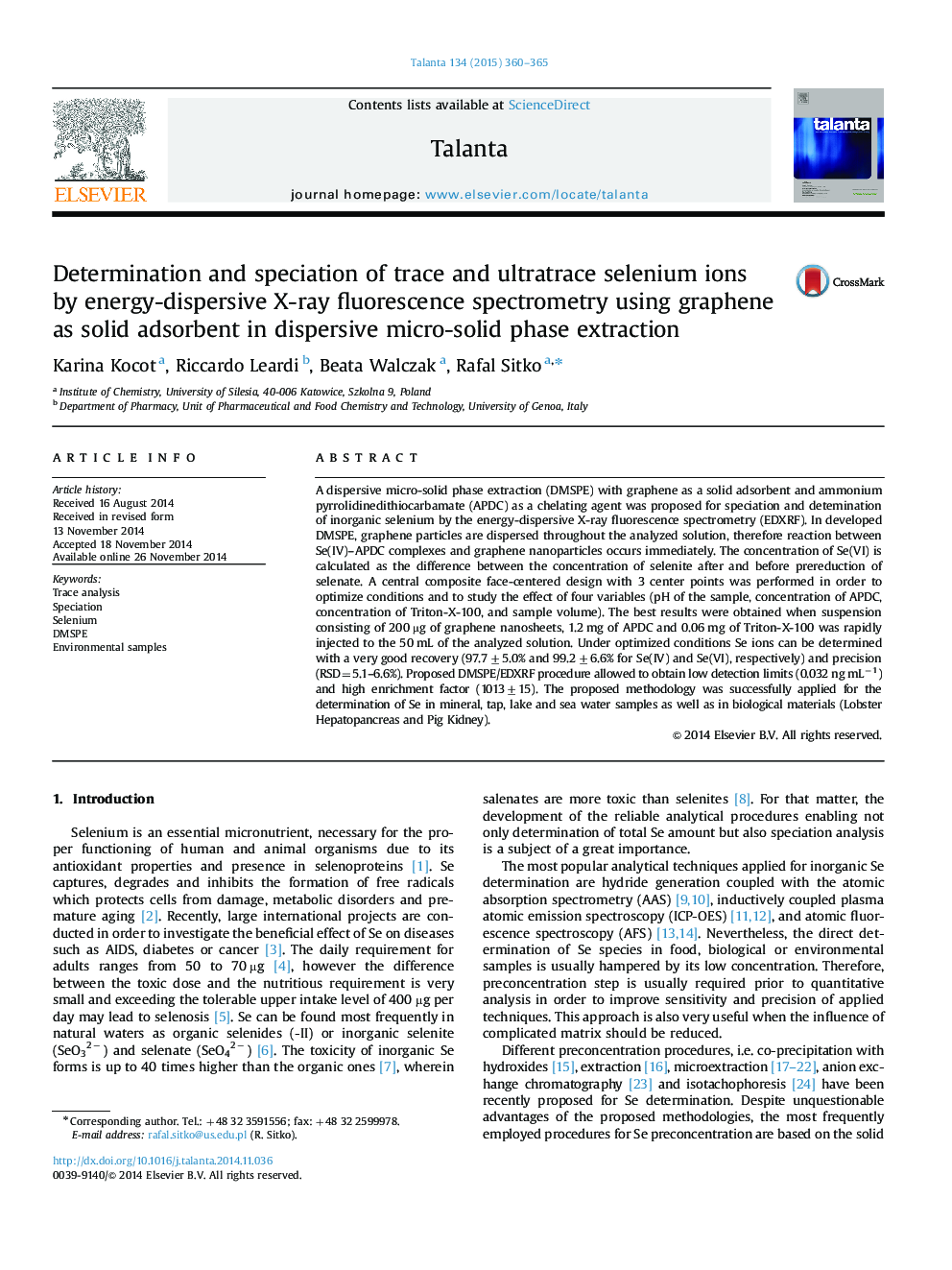| کد مقاله | کد نشریه | سال انتشار | مقاله انگلیسی | نسخه تمام متن |
|---|---|---|---|---|
| 1244091 | 1495801 | 2015 | 6 صفحه PDF | دانلود رایگان |
• A new preconcentration procedure for speciation and determination of Se.
• Graphene as a promising and efficient solid sorbent in DMSPE.
• A face-centered central composite design performed to optimize DMSPE conditions.
• Detection limit (0.032 ng mL−1) suitable for environmental analysis.
• Simple, fast, inexpensive and environmental friendly method.
A dispersive micro-solid phase extraction (DMSPE) with graphene as a solid adsorbent and ammonium pyrrolidinedithiocarbamate (APDC) as a chelating agent was proposed for speciation and detemination of inorganic selenium by the energy-dispersive X-ray fluorescence spectrometry (EDXRF). In developed DMSPE, graphene particles are dispersed throughout the analyzed solution, therefore reaction between Se(IV)–APDC complexes and graphene nanoparticles occurs immediately. The concentration of Se(VI) is calculated as the difference between the concentration of selenite after and before prereduction of selenate. A central composite face-centered design with 3 center points was performed in order to optimize conditions and to study the effect of four variables (pH of the sample, concentration of APDC, concentration of Triton-X-100, and sample volume). The best results were obtained when suspension consisting of 200 µg of graphene nanosheets, 1.2 mg of APDC and 0.06 mg of Triton-X-100 was rapidly injected to the 50 mL of the analyzed solution. Under optimized conditions Se ions can be determined with a very good recovery (97.7±5.0% and 99.2±6.6% for Se(IV) and Se(VI), respectively) and precision (RSD=5.1–6.6%). Proposed DMSPE/EDXRF procedure allowed to obtain low detection limits (0.032 ng mL−1) and high enrichment factor (1013±15). The proposed methodology was successfully applied for the determination of Se in mineral, tap, lake and sea water samples as well as in biological materials (Lobster Hepatopancreas and Pig Kidney).
Figure optionsDownload as PowerPoint slide
Journal: Talanta - Volume 134, 1 March 2015, Pages 360–365
